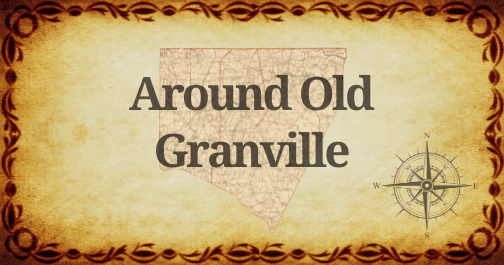Lovers of historical architecture could come up with the analogy that if Old Granville County – what is now the four-county area that includes Vance, Warren, Franklin and Granville counties – were an art museum, then all the lovely homes that dot the towns, cities and countryside certainly are works of art to be admired and enjoyed.
Continuing that analogy, it was architects and craftsmen like Jacob Holt and Thomas Bragg and James Burgess who are just a few of the state’s premier artists whose creations still stand -and are still admired – today.
“They were able to express their aesthetic and the community’s idea of the aesthetic,” said Mark Pace, local historian and North Carolina Room Specialist at the Richard Thornton Library in Oxford.
Pace and WIZS’s Bill Harris talked about a number of homes, some standing and some long gone, that can be attributed to Holt, Bragg and Burgess in Thursday’s TownTalk segment of Around Old Granville.
Holt moved to Warren County in the 1840s, having worked with William Howard, an acolyte of Thomas Jefferson, in Prince Edward County, Va. He estimates that as many as 80 Holt houses still stand, a tribute to the craftsmanship Holt and his team of artisans poured into each build.
“If you’ve got a Holt house, it’s not a ramshackle mess,” Pace said.
He set up shop in Warren County and soon laid claim to having the second-largest non-agricultural work force around, Pace said.
Among his workers were enslaved persons as well as freedmen. “He had the talent and he had the crew,” he said.
And although it wasn’t his first build, the William Eaton House is what put Holt on the map.
With motifs of Greek Revival, complete with columns, cornices, elaborate mantelpieces and sidelights, the Eaton house remains “one of the showplaces of Warrenton,” Pace said.
Montmorenci is another well-known home in Warren County, and was built by James Burgess in 1822.
Much of the interior of Montmorenci was dismantled and sent to be part of the DuPont estate called Winterthur in Delaware, Pace said, including incredibly engineered spiral staircases and intricate mantelpieces.
Thomas Bragg was also a contractor and architect who worked in the area in the 1820’s through the 1840’s, Pace said. He did significant work in Wake County and designed the William Polk House there.
The home Bragg built for his family still stands in Warrenton. Some of Bragg’s children went on to achieve fame in their own right: Thomas, Jr. became a governor of North Carolina and Braxton was a general in the Civil War – it’s for him that Fort Bragg, now Fort Liberty, was named.
CLICK PLAY!
